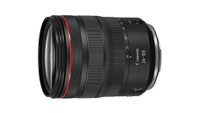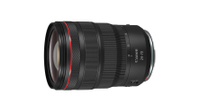Early Verdict
The Canon RF 70-200mm f/2.8L IS USM Z is about 15% more expensive than the current 70-200mm f/2.8L – which is smaller and easy to stow away, making it a great choice for mobile photography. The new model ramps up the build quality with a solid, fixed barrel that puts to bed any worries about sealing (which many had about the previous lens). It’s also a little sharper at the long end, compatible with teleconverters, has slightly better stabilization and includes video features like an Iris ring and compatibility with the Power Zoom adapters. If you’re searching for the ultimate 70-200mm f/2.8 that's truly worthy of trinity status, you need look no further!
Pros
- +
Solid build quality
- +
Superior image quality
- +
Fast and quiet AF
- +
Available in black or white
- +
Control and Iris rings
- +
Internal zoom and focus
Cons
- -
Expensive
- -
Limited Iris ring compatibility
- -
Large and bulky
Why you can trust Digital Camera World
The Canon RF 70-200mm f/2.8L IS USM Z is the latest lens to join Canon's hybrid range of optics, appealing to both stills photographers and video makers in equal measure. It's sure to be a hit with hybrid shooters who cover things like weddings, live events, commercial, advertising, news and corporate gigs.
The ‘Z’ denomination stands for zoom, indicating its compatibility with video-focused Power Zoom adapters. The Canon RF 70-200mm f/2.8L IS USM Z is only the manufacturer's second lens to feature this badge, sitting alongside the RF 24-105mm f/2.8L IS USM Z that was announced exactly 12 months earlier.
Canon’s hybrid lenses are designed to fill a gap between the company's cine lenses, L-series photography glass and broadcast optics, offering the best of all worlds. Hybrid lenses feature an aperture (Iris) ring which, is useful for both stills (depending on your camera) and video, though its values are marked in f-stops rather than the more accurate T-stop typical of cine lenses. Focus is designed to be fast, smooth and quiet – ideal for both stills and video – and also features some of the sharpest glass in Canon’s arsenal.
I got hands-on with a beta sample of the Canon RF 70-200mm f/2.8L IS USM Z at the company's HQ in London, England. Here are my initial findings…
Canon RF 70-200mm f/2.8L IS USM Z: Specifications
| Mount | Canon RF |
| Autofocus | Yes, Dual Nano USM |
| Image stabilization | 5.5 stops, up to 7.5-stops with IBIS |
| Aperture range | f/2.8 - f/22 |
| Close focus distance | 49cm (at 70mm) 68cm (at 200mm) |
| Coatings | Super Spectra and Air Sphere |
| Aperture blades | 11 |
| Filter | 82mm |
| Size (DxL) | 88.5 x 199mm |
| Weight | 1115g (white) / 1110g (black) |
Canon RF 70-200mm f/2.8L IS USM Z: Design & Handling
When Canon launched its new mirrorless full-frame system, with the original Canon EOS R back in October 2018, it needed to release its three f/2.8 trinity lenses quickly to show it was serious about the new mount, and to encourage working pros to get on board fast.
This resulted in 2019's Canon RF 70-200mm f/2.8L IS USM. This lens became quite the talking point among photographers, as it was the first 70-200mm f/2.8 lens to feature collapsible design and an external zoom. Further, it wasn't compatible with teleconverters. While it was compact and a superb choice for travel photography, many pros have questioned its build quality (with concerns over the sealing of a lens with a "trombone" mechanism) and pined for a 70-200mm f/2.8 with a more robust build, plus the ability to use extenders.
Those prayers have now been answered, as the RF 70-200mm f/2.8L IS USM Z puts those build quality issues to bed with its internal zoom and internal focus – meaning the lens stays at a constant length, regardless of your focal length, and therefore has a preferable build if you’re worried about dust ingress or knocks and dings. It is worth noting, however, that the existing RF 70-200mm f/2.8L IS USM extends to about the same length as the new hybrid lens when fully zoomed to 200mm.
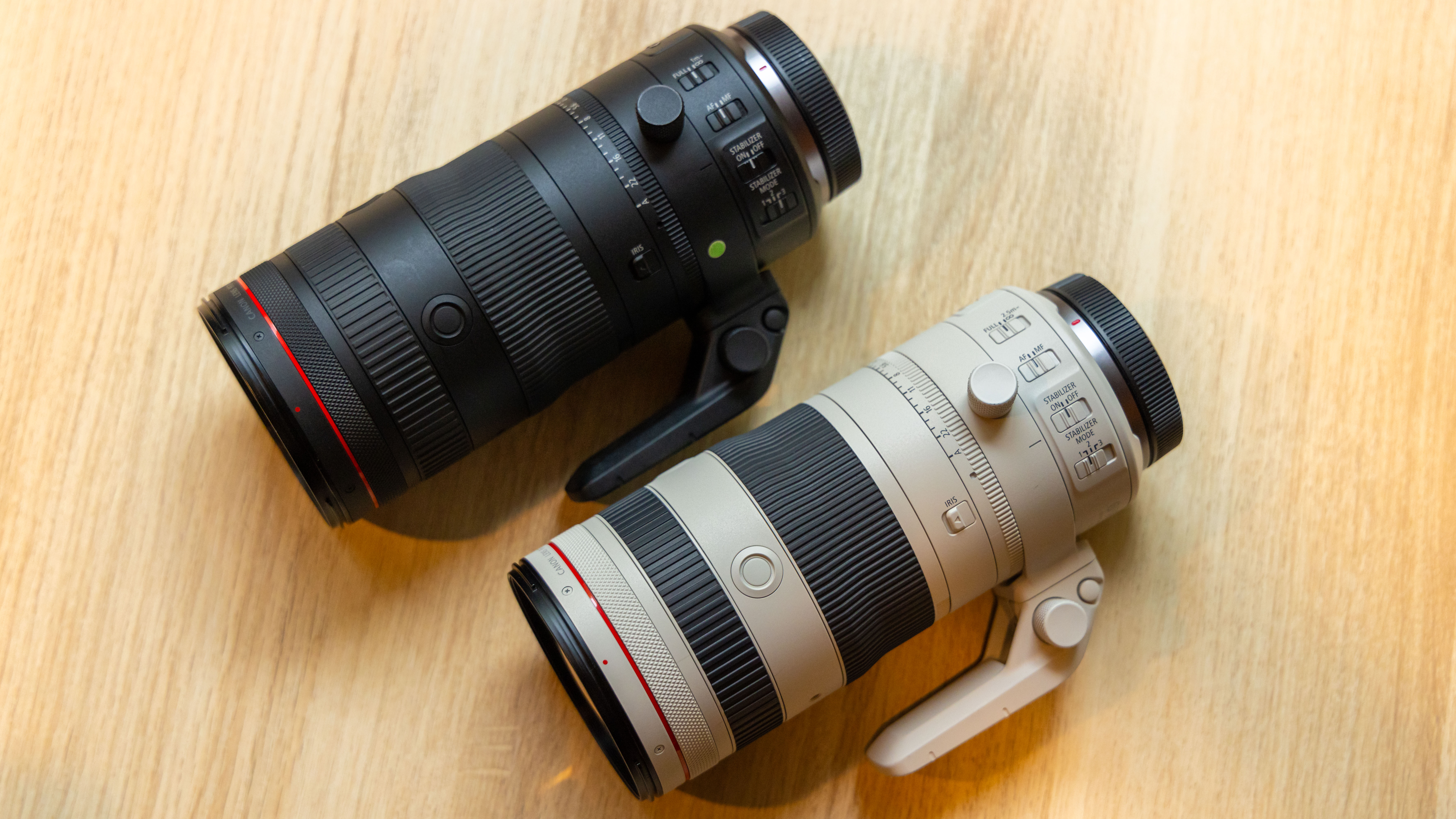
Interestingly, the new model is available in black or white colorways. The white version weighs 5g more, due to Canon's slightly heavier heat-resistant white paint. It’s good to have the option to buy the black version if you don’t want to draw attention in cities, for example, and helps mitigate reflective surfaces in a studio setting.
The new model’s weight of 1,115g (white) or 1,110g (black) isn’t all that much heavier than the previous RF 70-200mm f/2.8L, which weighs 1,070g, so it's the size that's the more important difference between them.
The hybrid model is compatible with teleconverters like the Canon RF 2x Extender (which has a protruding element that needs to be seated into a space in the back of the lens). That being said, the extenders are only available in white – and Canon has no current plans to bring out black editions. This means that your setup could look a little mismatched, but that's no big deal if you use stickers and skins from companies like Alphgvrd or neoprene camo sleeves.
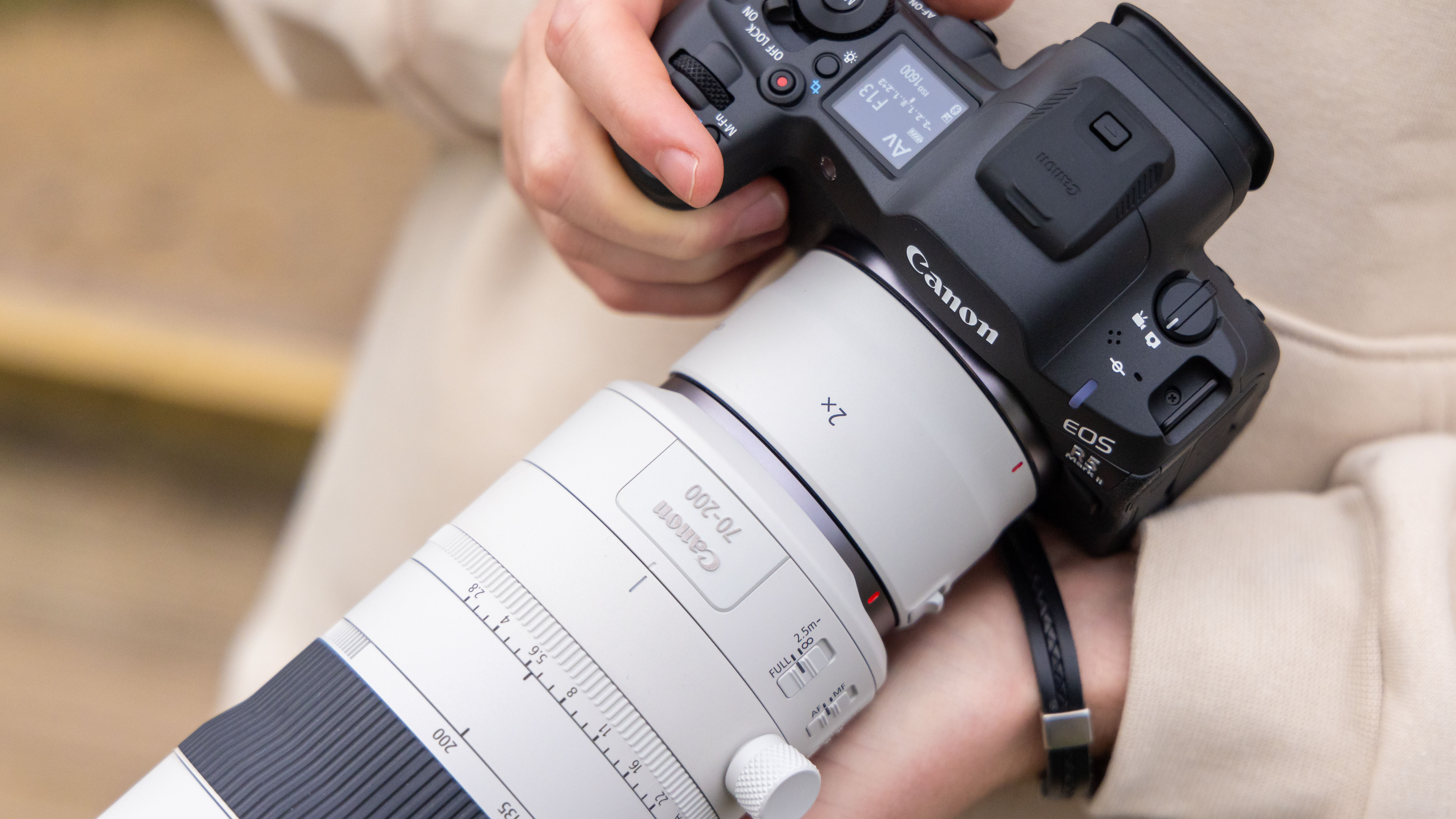
Other features include two customizable Function buttons, the Control ring we’ve come to expect from Canon’s RF lenses, plus a zoom ring that goes from 70mm to 200mm with a short 70º rotation.
You’ll also find an Iris switch, which can be used to engage the Iris ring or lock it in the ‘A’ setting – reverting aperture control back to your camera body. Physical switches on the lens barrel include a Focus Limiter, which can be set to Full or between 2.5m and Infinity, and there are switches for AF/MF, Stabilizer On/Off and a trio of stabilization modes.

The lens foot and collar can each be removed separately to free up space and weight, or attached to help you balance your camera more evenly on a tripod.
You’ll also notice a few screw holes on the lens barrel, and this is for either of Canon’s PZ-E2 or PZ-E2B Power Zoom adapters to be fitted. These are the same adapters used by and released with the RF 24-105mm f/2.8L, which enable the zoom to be racked electronically and remotely.
Canon RF 70-200mm f/2.8L IS USM Z: Performance
Canon UK's product intelligence consultant, Mehdia Mehtal, told me that, “At 70mm, sharpness between the new Canon RF 70-200mm f/2.8L IS USM Z and smaller RF 70-200mm f/2.8L IS USM is very similar, though at 200mm the new hybrid Z lens has the edge,” so this should make it Canon’s sharpest 70-200mm lens to date.
It makes sense, too, as the external barrel doesn’t rack back and forth when zooming so it's a more precise instrument. It also uses three aspheric elements and UD elements, though unlike the smaller RF 70-200mm f/2.8L it adds Super UD elements for "maximum sharpness". It also boasts Super Spectra and Air Sphere coatings to reduce ghosting, keep color balance even and tame flare.
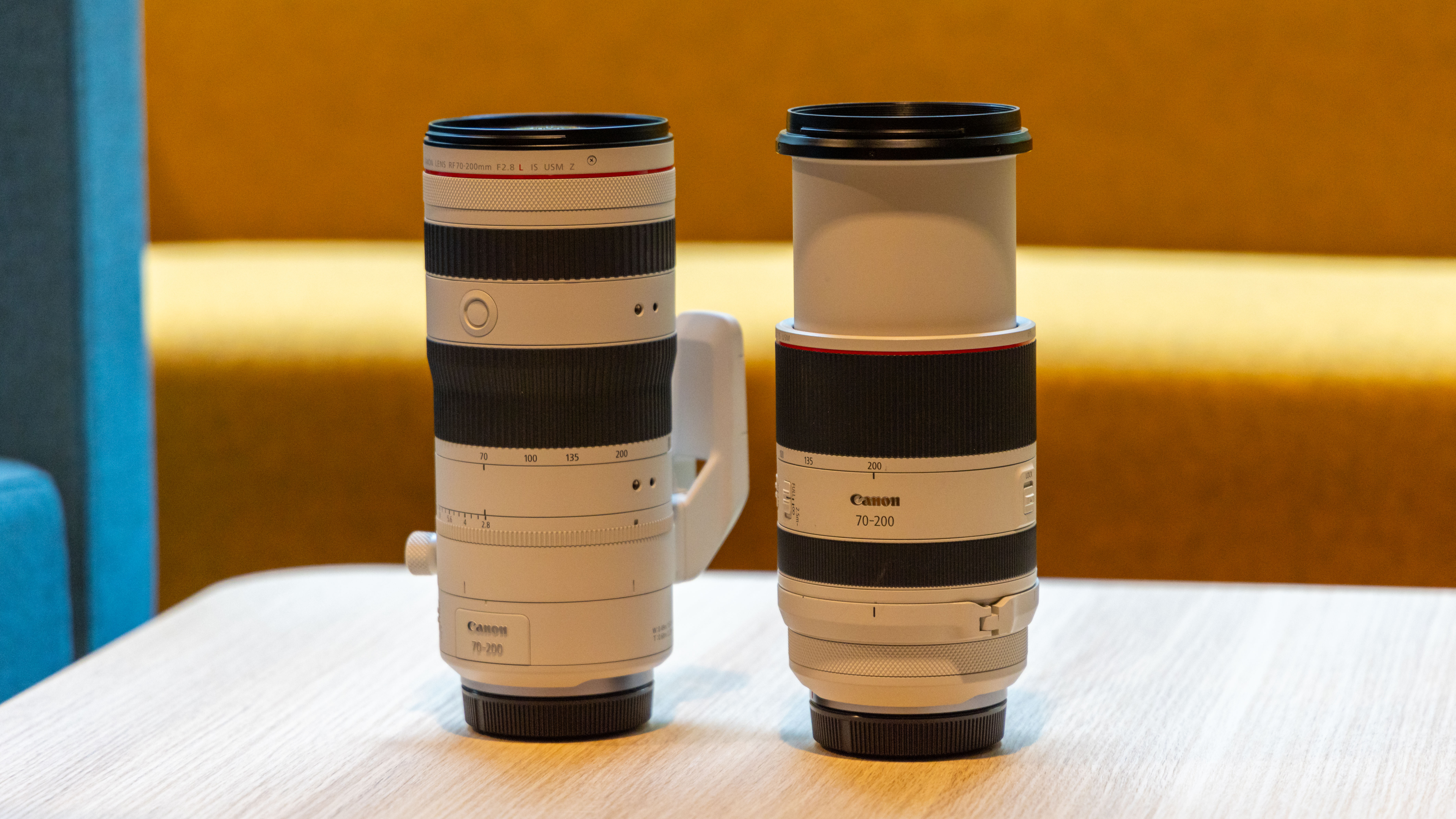
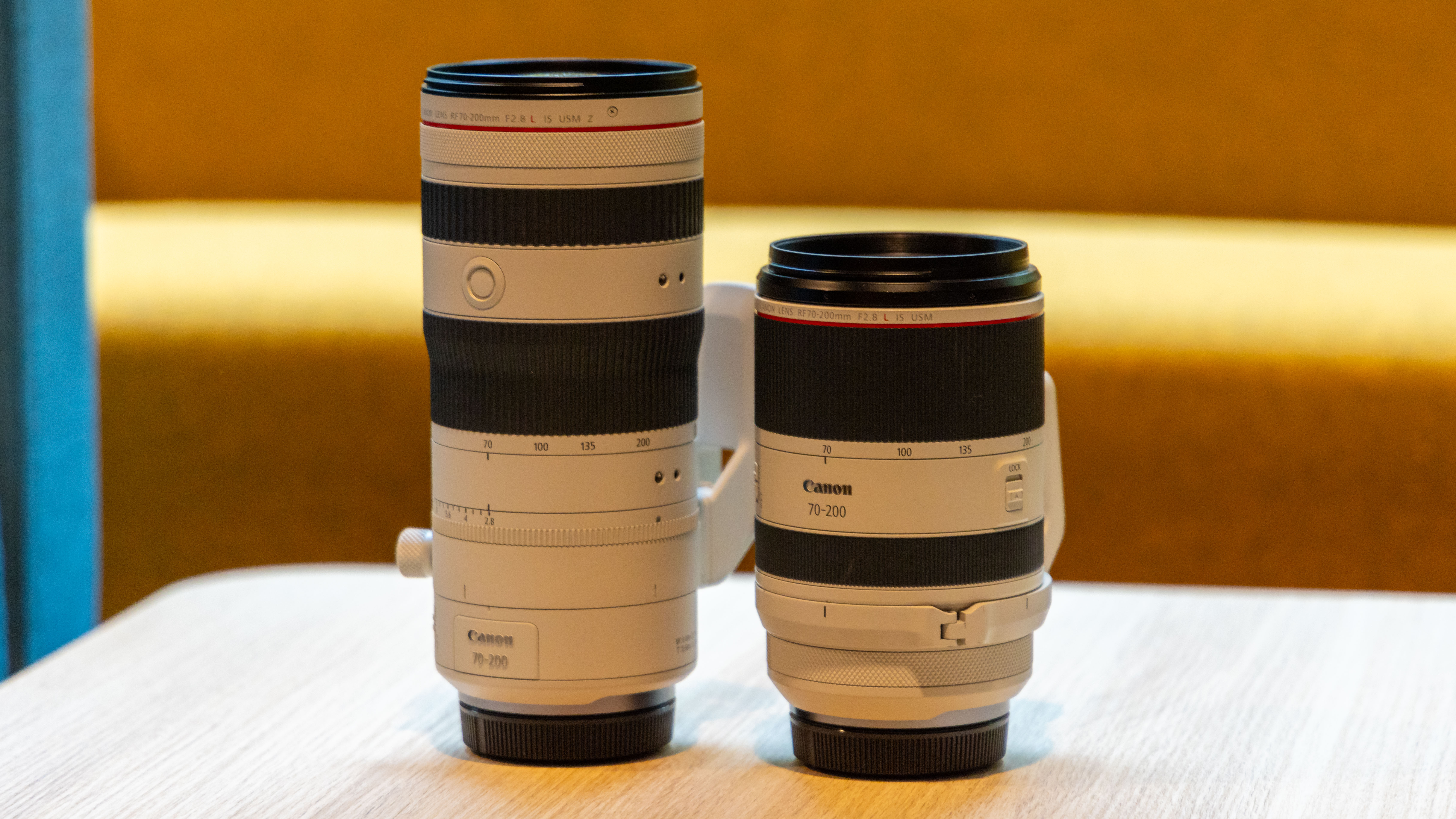
The aperture in the new hybrid model features 11 blades – an upgrade from the 9 blades found in the earlier RF 70-200mm f/2.8L, so defocused areas should be a little more rounded.
The aperture can be controlled by the Iris ring, though it’s worth noting that this is an electronic fly-by-wire ring – not the physical kind like you might find on older film lenses – though this is the case with all Canon’s hybrid lenses.

The aperture ring can be used for video on all EOS R bodies, though currently can only be used in photo mode with the EOS R1 and R5 Mark II. Though Mehdia told me that, “We’re hoping to expand compatibility to more key Canon EOS R series bodies via a firmware update in the future”.
Crucially for a hybrid lens catering to video shooters, the lens features Electronic Parfocal Performance and Optical Focus Breathing suppression. While I wasn’t able to thoroughly test these in my short time with the lens, I can confirm that the Dual Nano USM is blazingly fast, smooth and quiet.


I was only able to get hands-on with a beta sample, so image quality could change a little between now and the production version. But the lens I was able to test out delivered some very impressive results; sharpness was very strong, not only in the center but across the frame, even when shooting wide open at f/2.8. Though I wouldn't expect anything less – after all this is Canon's "sharpest ever" 70-200mm f/2.8 lens.
In the above test shots you can see the difference between the RAW and JPEG files, with the in-camera processing correcting a very subtle vignette in the corners at f/2.8.

Colors are vibrant, contrast is punchy and details are razor-sharp. As we'd expect from one of Canon's elite optics we also saw no signs of lens defects such as ghosting or chromatic aberration, the quality was simply impressive.
Because the lens is so sharp to begin with, this does mean that it lends itself to being paired with a teleconverter (or Extender, as Canon calls them). Putting extra glass in-between the lens and camera body inevitably means image quality will take a slight hit, though in my testing I was still very happy with the quality produced with the RF 2x Extender attached – you can see the result below.

I had a brief opportunity to take some shots at a duck pond and, because they were quite far away, the 200mm focal length wasn't quite powerful enough to produce frame-filling shots.
So, I sandwiched the 2x Extender between my Canon EOS R5 Mark II and the new hybrid 70-200mm, effectively turning it into a 140-400mm lens with a maximum aperture of f/5.6. Autofocus was still really nippy and the image quality remained nice and sharp, too.
Canon RF 70-200mm f/2.8L IS USM Z: Verdict
The Canon RF 70-200mm f/2.8L IS USM Z is hitting the shelves with an RRP that's about 15% more expensive than the existing RF 70-200mm f/2.8L IS USM. Along with the price, for many users the non-hybrid will still be the one to go for as it’s small and easy to stow away – making it a great choice for photography on the move.
The new hybrid Z lens ramps up the build quality with a solid barrel that is fixed in position throughout the zoom range – putting to bed any worries you might have had about moisture or dust ingress with the older 70-200mm (despite Canon’s best reassurances regarding its weather sealing).
The new lens is also a little sharper at the long end, compatible with Canon RF Extenders, has slightly better stabilization and includes crucial video features such as the Iris ring, parfocal focus and compatibility with Power Zoom adapters. If you’re a Canon mirrorless shooter searching for the ultimate 70-200mm f/2.8, truly worthy of trinity status, you need look no further!
Should you buy the Canon RF 70-200mm F2.8L IS USM Z?
✅ Buy it...
- You're looking for Canon's ultimate 70-200mm f/2.8 trinity lens
- You like to shoot a mixture of photo stills as well as video
🚫 Don't buy it...
- You need a smaller 70-200mm f/2.8 lens as the existing RF 70-200mm F2.8L IS USM packs away smaller
- If you don't need the wide f/2.8 aperture you might be better off with the RF 70-200mm F4L IS USM
Alternatives
Canon RF 24-105mm f/4 L IS USM – This lens is relatively compact and lightweight, offers impressive sharpness, has image stabilization and is weather sealed – in all, a great complement to any EOS R camera.
Canon RF 24-70mm f/2.8L IS USM – Canon’s most important RF mount trinity lens is here to prosthelytize the benefits of the EOS R system – it’s sharp, it’s stabilized and it even suppresses focus breathing, but it's also a way more expensive proposition.

Deputy Editor on PhotoPlus: The Canon Magazine, Dan also brings his technical wizardry and editing skills to Digital Camera World. He has been writing about all aspects of photography for over 10 years, having previously served as technical writer and technical editor for Practical Photography magazine, as well as Photoshop editor on Digital Photo.
Dan is an Adobe-certified Photoshop guru, making him officially a beast at post-processing – so he’s the perfect person to share tips and tricks both in-camera and in post. Able to shoot all genres, Dan provides news, techniques and tutorials on everything from portraits and landscapes to macro and wildlife, helping photographers get the most out of their cameras, lenses, filters, lighting, tripods, and, of course, editing software.

